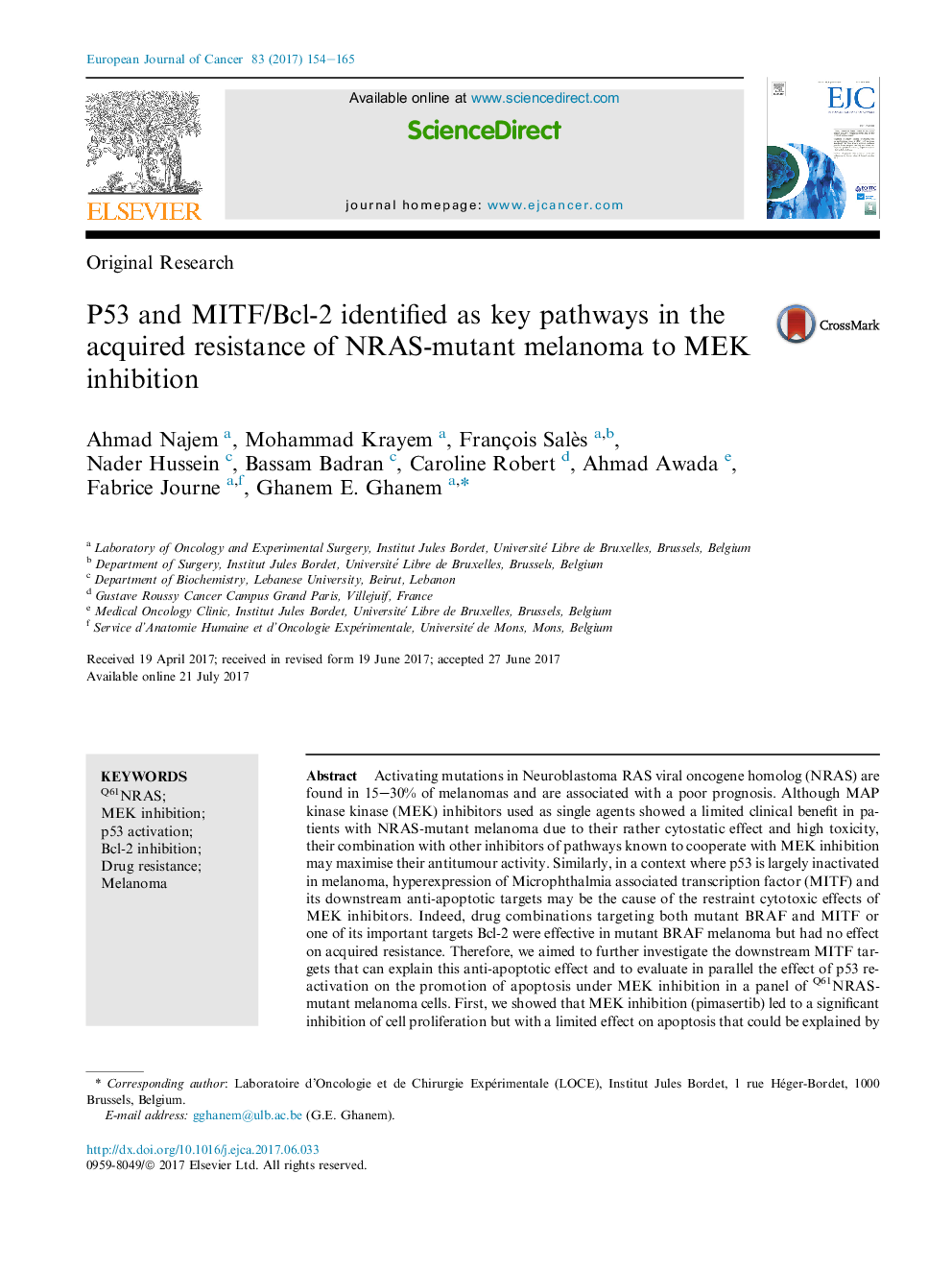| کد مقاله | کد نشریه | سال انتشار | مقاله انگلیسی | نسخه تمام متن |
|---|---|---|---|---|
| 5526406 | 1547049 | 2017 | 12 صفحه PDF | دانلود رایگان |

- Activating mutations in NRAS are found in 15-30% of melanomas and are associated with a poor prognosis.
- MEK inhibitors have been proposed as targeted therapy for NRAS mutant melanoma, but, used alone, have rather a cytostatic effect and a mediocre benefit/toxicity ratio in patients.
- Activation of cAMP/MITF/Bcl-2 pathway is a main antiapoptotic mechanism of resistance to MEK inhibition in NRAS mutant melanoma.
- Combinations cotargeting MEK and p53/Bcl-2 can overcome resistance and induce massive apoptosis in NRAS mutant melanoma.
Activating mutations in Neuroblastoma RAS viral oncogene homolog (NRAS) are found in 15-30% of melanomas and are associated with a poor prognosis. Although MAP kinase kinase (MEK) inhibitors used as single agents showed a limited clinical benefit in patients with NRAS-mutant melanoma due to their rather cytostatic effect and high toxicity, their combination with other inhibitors of pathways known to cooperate with MEK inhibition may maximise their antitumour activity. Similarly, in a context where p53 is largely inactivated in melanoma, hyperexpression of Microphthalmia associated transcription factor (MITF) and its downstream anti-apoptotic targets may be the cause of the restraint cytotoxic effects of MEK inhibitors. Indeed, drug combinations targeting both mutant BRAF and MITF or one of its important targets Bcl-2 were effective in mutant BRAF melanoma but had no effect on acquired resistance. Therefore, we aimed to further investigate the downstream MITF targets that can explain this anti-apoptotic effect and to evaluate in parallel the effect of p53 reactivation on the promotion of apoptosis under MEK inhibition in a panel of Q61NRAS-mutant melanoma cells. First, we showed that MEK inhibition (pimasertib) led to a significant inhibition of cell proliferation but with a limited effect on apoptosis that could be explained by the systematic MITF upregulation. Mimicking the MITF effect via cyclic adenosine monophosphate activation conferred resistance to MEK inhibition and upregulated Bcl-2 expression. In addition, acquired resistance to MEK inhibition was associated with a strong activation of the anti-apoptotic signalling MITF/Bcl-2. More importantly, selective Bcl-2 inhibition by ABT-199 or Bcl-2 knockout using CRISPR/Cas9 system annihilated the acquired resistance and restored the sensitivity of NRAS-mutant melanoma cells to MEK inhibition. Strikingly and similarly, direct p53 reactivation (PRIMA-1Met, APR-246) also broke resistance and synergised with MEK inhibition to induce massive apoptosis in NRAS-mutant melanoma cells with wild-type or mutant p53. Hence, our data identify MITF/Bcl-2 as a key mechanism underlying resistance of NRAS-mutant melanoma cells to apoptosis by MEK inhibitors and paves the way for a promising drug combination that could prevent or reverse anti-MEK resistance in this group of patients.
Journal: European Journal of Cancer - Volume 83, September 2017, Pages 154-165